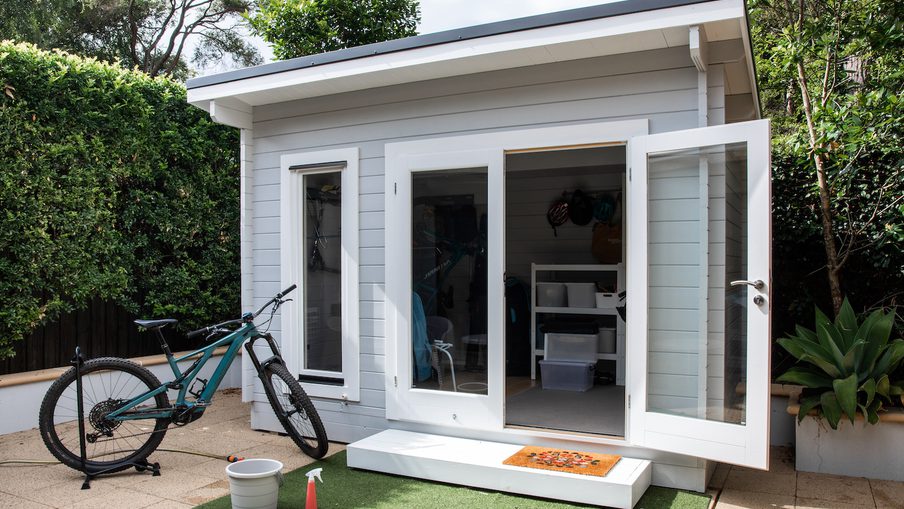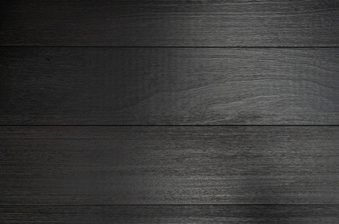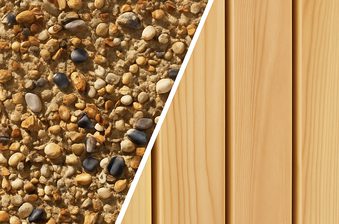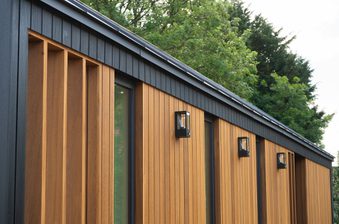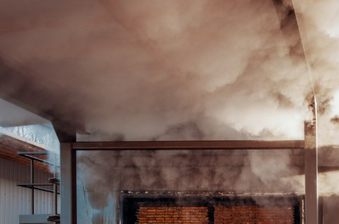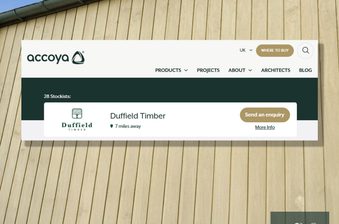An unsightly outbuilding immediately downgrades your garden. Here’s our guide to creating a durable, design-led shed.
When choosing timber for your shed, natural durability, dimensional stability and aesthetic beauty are key.
To give you some ideas and inspiration for your shed cladding, let’s take a look at options for species and profiles.
The best types of wood for garden shed cladding
Many of the cladding products you will find at home improvement stores are types of chemically pressure-treated (or tanalised) spruce. While serviceable, these products lack natural durability (and beauty, if we’re being honest)!
Instead, try a species like western red cedar, European oak, Siberian larch, Douglas fir or a heat-treated option like Thermo-ayous. These woods combine beauty with natural durability, promising decades of service life.
Explore our range of timber cladding
1. Western red cedar
A long-time favourite of architects and home improvers, western red cedar is considered by many as the best timber for exterior applications like cladding. We find it hard to disagree.
This Canadian-imported species has a glorious reddish-brown colour, with occasional darker chocolate and lighter salmon streaks, placing it amongst the attractiveness elite.
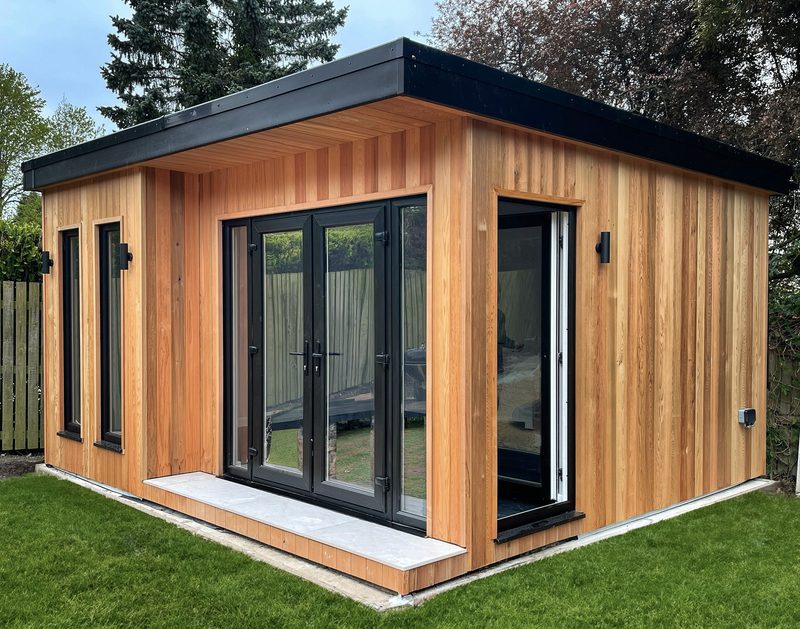
While cedar is a softwood and not particularly dense or heavy, it has remarkable rot resistance – the timber boasts a unique biochemistry, containing natural fungicidal and insecticidal compounds called thujaplicins.
It has a Class 2 rating BS EN 350 rating. BS EN 350 is a European standard that assesses the natural durability of wood (with 1 being the most durable, and 5 being the least durable). Class 1 can only be achieved through chemical modification processes like acetylation, as in the example of Accoya®.
Cedar also has very good dimensional stability – it won’t warp, shrink or expand in the face of moisture as dramatically as some other species might.
Cedar finishes very well and there are a number of treatment options – you could even paint it a solid colour, but we think it’d be a shame to conceal all that natural beauty.
Take care during installation with fixings, however. The wood leeches black stain with certain metals, so stainless steel nails or screws are essential.
2. European oak
While a very popular structural timber, oak also works well as a high-performance exterior option for cladding a posh shed or garden room, with timeless golden-brown hues that are bound to make a statement.
European oak is one particular type that works well for cladding any shed or outbuilding. It has a Class 2 rating (durable) according to EN 350 standards, with moderate to good dimensional stability.
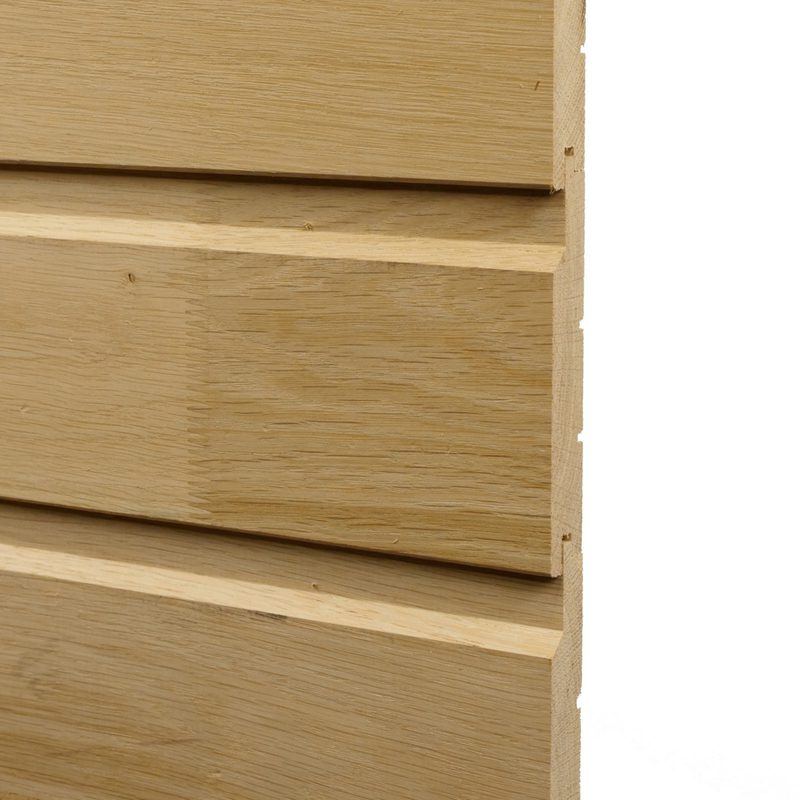
It’s also available in a wide range of 'finger-jointed' lengths. This refers to smaller pieces of timber being machined and glued together to create one long length, boosting stability and allowing the cladding to be edited free of defects.
Like cedar, oak can be left without treatment, but it will eventually attain a distinguished silvery-grey look. Also, like cedar, oak reacts with iron, so stainless steel nails or screws are a must.
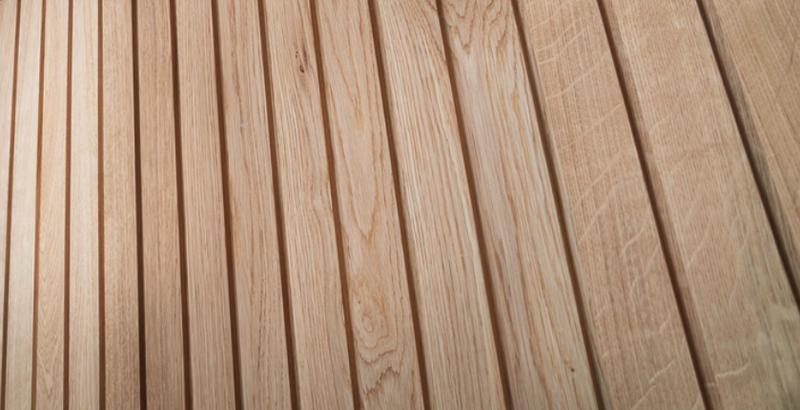
3. Siberian larch
Another species often on the tip of people’s tongues when it comes to exterior cladding applications, for very good reason.
With good dimensional stability and a Class 3 (moderate durability) BS EN 350 rating, Siberian larch assures top performance.

With the unsorted grade having few knots, a straight grain and coming in a variety of beautiful shades from yellow to reddish-brown, Siberian larch is a formidable choice for that garden storage area or hideaway.

For an even more natural look, sawfalling grades come with additional knots, providing added rustic character.
Native to cold, harsh, sub-zero climates, larch is slow growing. This means, despite being a softwood, it clocks in with a density of 575kg/mᵌ.
Taking finishes very well, Siberian Larch can be stained or left to weather naturally with a service life of over 50 years.
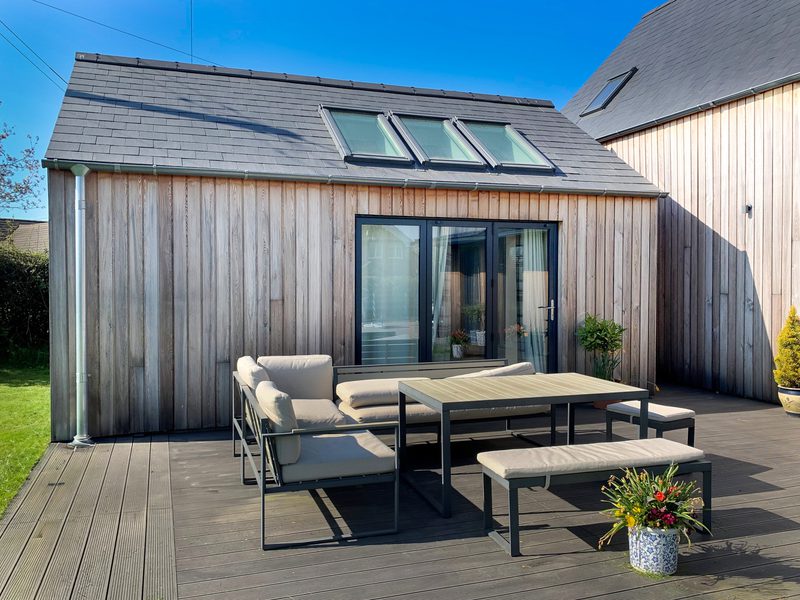
We sort our Siberian larch cladding into grade ‘A’ (Unsorted I-III) and grade ‘B’ (Sawfalling I-V). A allows for infrequent, smaller knots, whereas Grade B has more knots per plank – but both perform excellently for garden shed cladding.
4. Douglas fir
Douglas fir is yet another popular softwood with natural resistance to decay – with a fungicidal lignin structure and resin acids, it is rated as Class 3 (moderate durability). Like cedar, it also hails from the forests of the Pacific Northwest.
One thing many people value about Douglas fir is its beautiful variation in colour and character — you can admire the differences between panels all day. It has a wild grain pattern and a warm reddish-brown palette.

Douglas fir can also be a cost effective option for those running a tighter budget. In our DTC2 profile, at the time of writing Douglas fir costs £45 + VAT per m². The equivalent in cedar is £55 + VAT.
5. Thermally-modified woods (like Thermo-ayous, -Nordic pine and -tulipwood)
If you’re on a slight budget but still want a high-performance wood for your shed cladding, take a look at Thermo-ayous, Thermo-Nordic pine and Thermo-tulipwood.
The sustainable heat treatment process drastically improves the timber’s outdoor performance, producing a decay-resistant, stable and eye-catchingly beautiful exotic brown cladding solution. All thermally-modified cladding products have a BS EN 350 Class 2 (durable) rating.
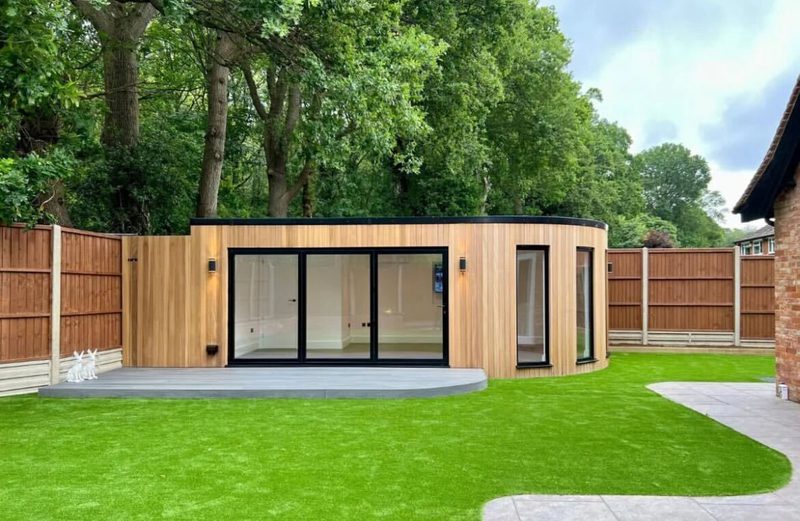
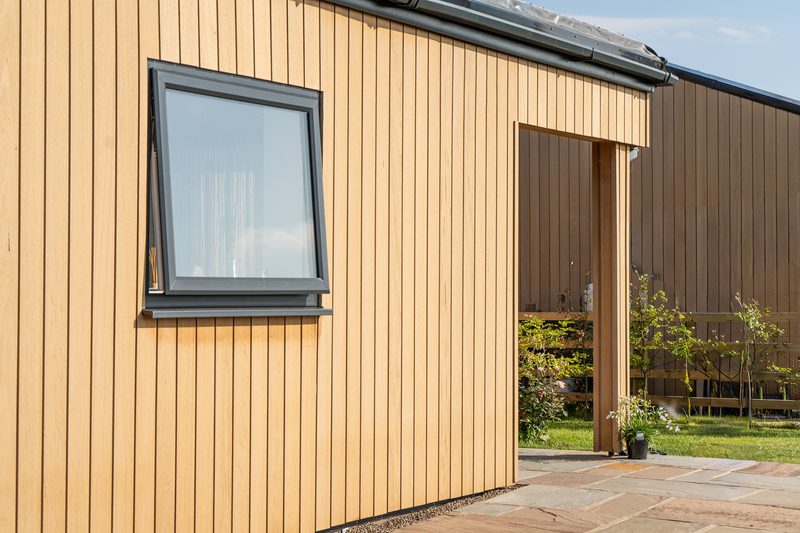
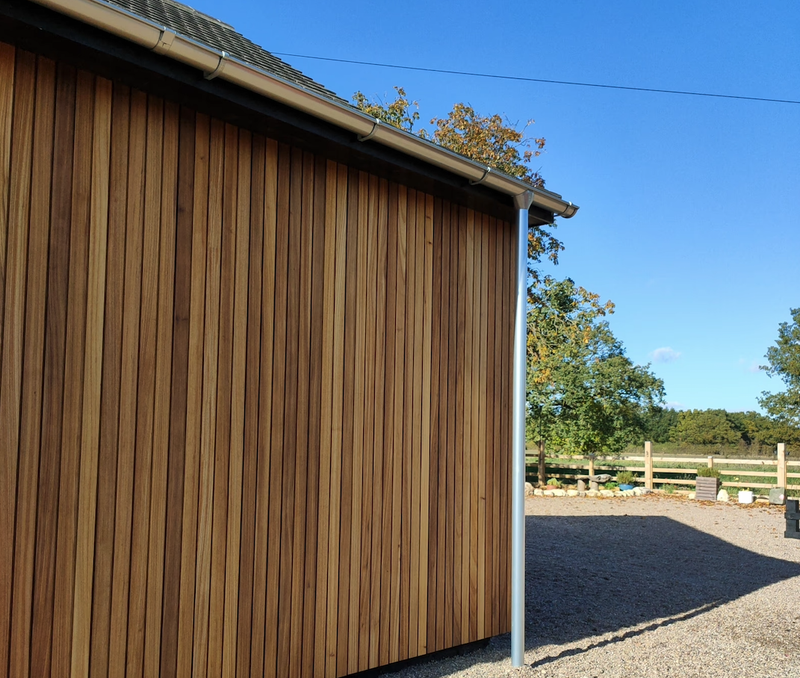
Once you’ve chosen a species of timber, you need to select a profile.
The best cladding profiles for a garden shed
Profile determines how the cladding boards fit together, predominantly affecting appearance but also performance. For a more traditional look, opt for a horizontal style like shiplap or feather edge. If you’re after a more contemporary style, consider V-groove or shadow gap, potentially fixed vertically.
Shiplap – a versatile, timeless style
Shiplap is the most popular garden shed exterior wall cladding profile. Designed to be installed horizontally, it provides a versatile, timeless and finished look that’s at home in any outdoor space.
As well as being synonymous with garden sheds, shiplap is functional, too – the smooth curve to its shape helps with rainwater runoff.


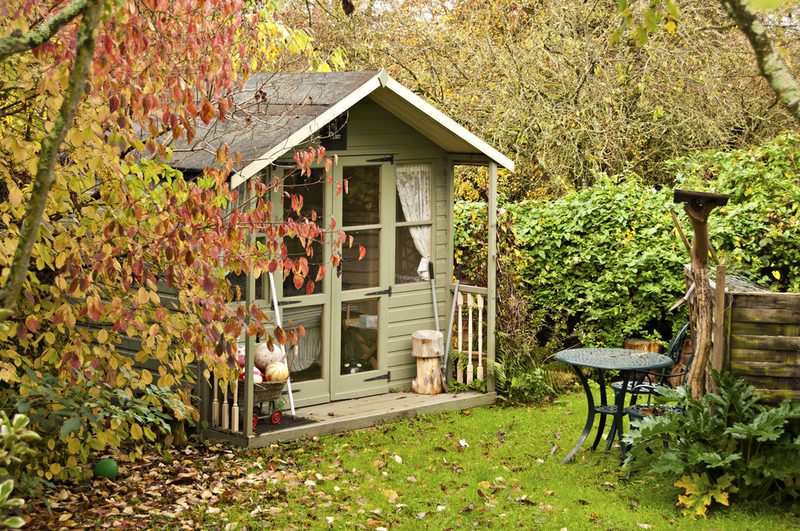
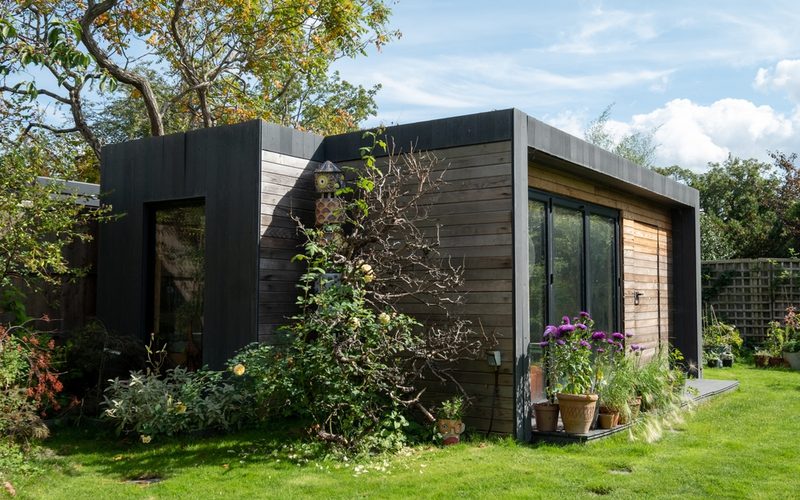
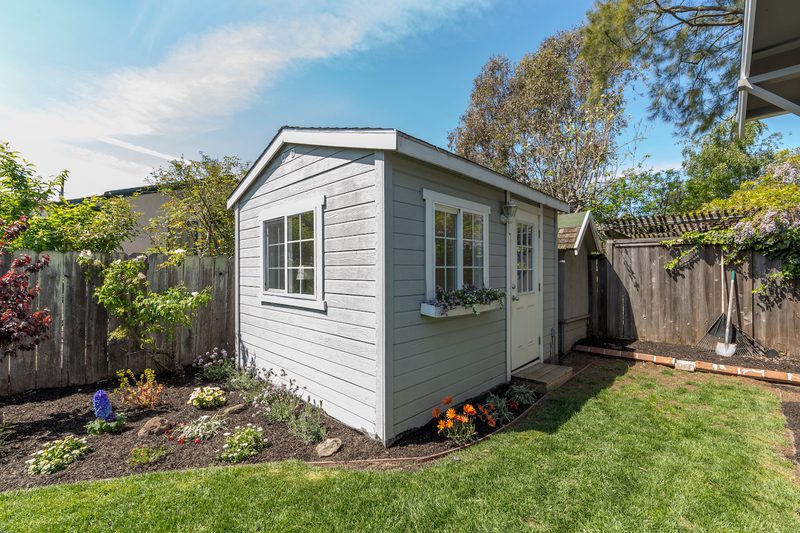
Halflap has a similar look to shiplap, but has a flat (rather than curved) lip and an overlapping fit, rather than tongue and groove.

Feather edge – a weatherproofed, traditional style
If you’re looking for an even more traditional and countryside feel, you may want to take a look at feather edge. The overlapping boards, cut at an angle, are most typically associated with rural outbuildings.
With its boards cut at an angle, feather edge also runoff of rain water, helping to shield your shed from the elements.


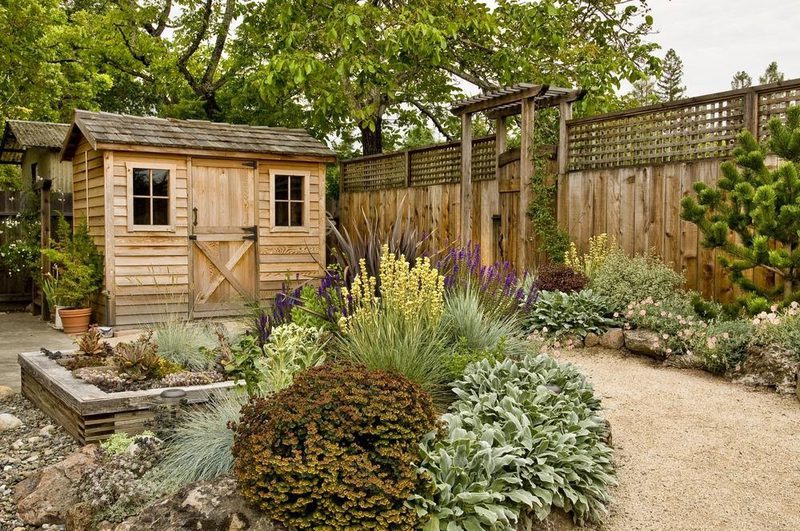
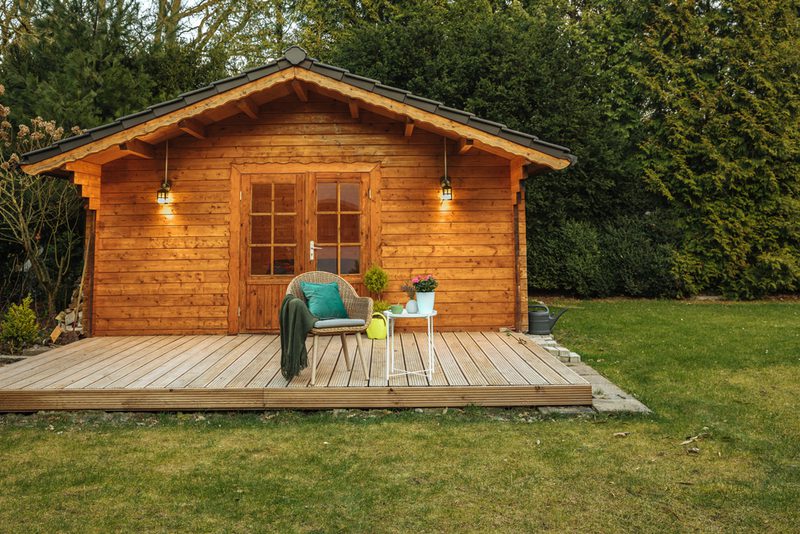
V-groove or shadow gap profile – for a modern statement
To make a contemporary touch with your garden shed or outbuilding cladding, consider a modern profile like shadow gap or V-groove.
Both of these profiles provide a smooth, uniform and refined look. The neat gaps create a subtle shadow line between each cladding board.
As long as they are fitted professionally and properly, their interlocking nature makes them highly waterproofed.


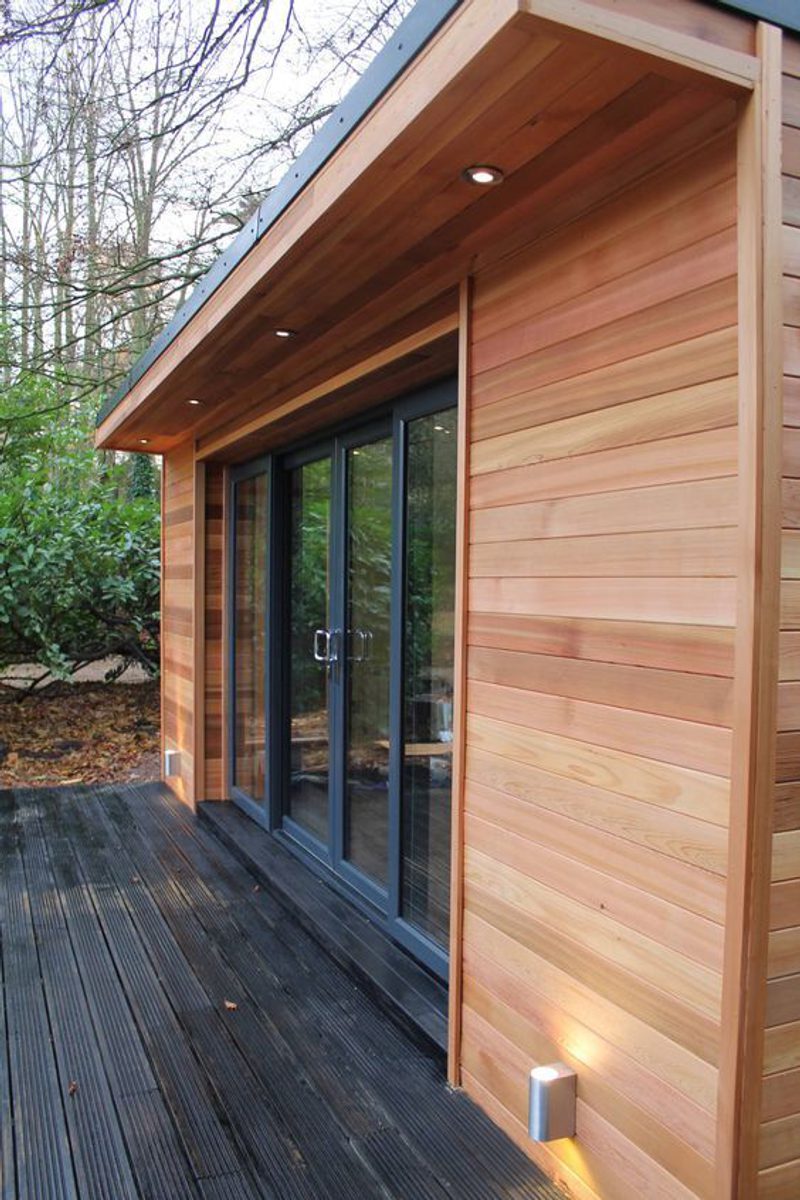
Unlike the aforementioned shiplap, halflap and feather edge, these profiles are commonly fixed vertically – a popular design-led choice.
(Be sure to check out our blog giving ideas and inspiration on choosing between vertical and horizontal cladding.)
Ready to start your garden shed cladding project?
Explore our wide range of quality timber cladding. All of our products are made from sustainably sourced imported timber and machined by us to your choice of profile.
For more inspiration, check out some of our recent projects, or message us if you have any questions.
Get in touch with our team
